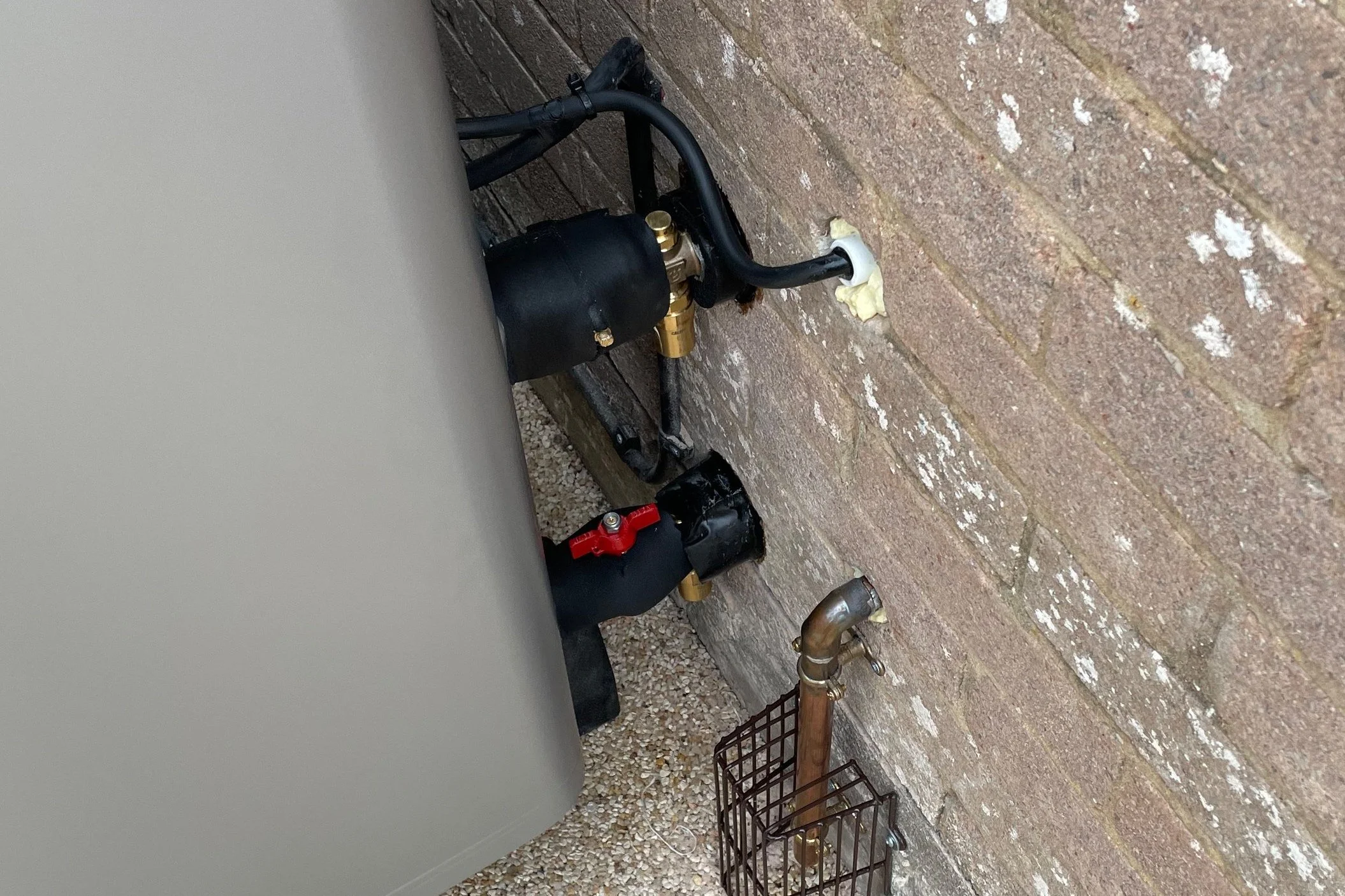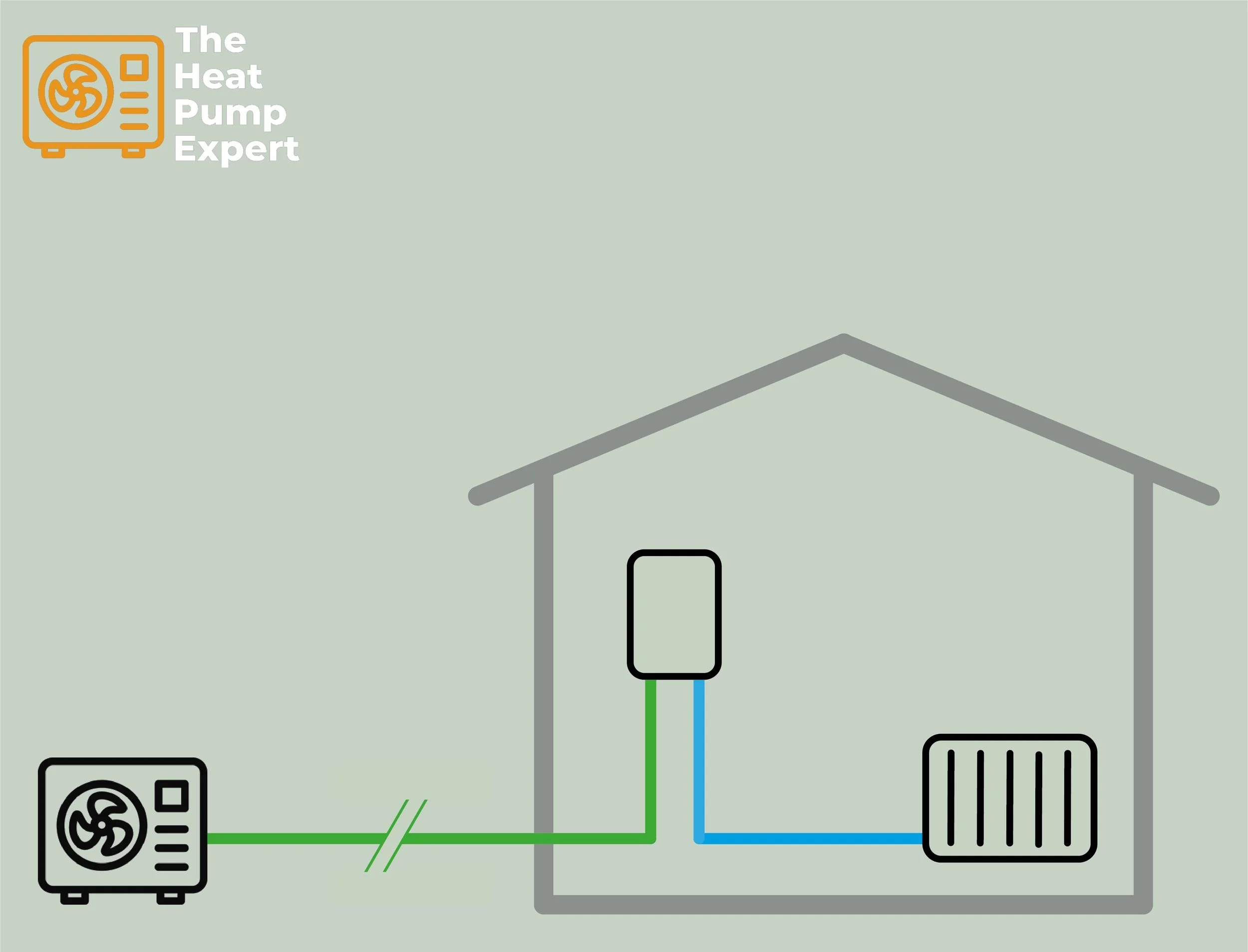Monobloc or split
What are the differences between monobloc and split air to water heat pumps?
What is a monobloc heat pump?
A monoblock heat pump has its refrigerant circuit contained solely within the outdoor unit, meaning that the heating system water is taken outside to be heated.
See key below.
Monobloc advantages
Monoblock heat pumps do not require an F-gas qualified engineer to install them; as solely hydraulic connections are to be made, a plumber is capable of installing one. This reduces barriers of entry into the installation market for engineers, meaning in the long run, you can expect monoblock heat pumps to be typical for most properties.
Monobloc disadvantages
Monoblock heat pumps are restricted by maximum pipe length, meaning they should be installed as close to the dwelling as practicable. Split heat pumps are far more flexible in this regard.
Heating systems connected to a monoblock heat pump should have provisions for antifreeze protection. This is to defend the outdoor unit from catastrophic failure and refrigerant loss in the event of a power cut during freezing ambient temperatures.
There are two main methods of freeze protection; glycol antifreeze added to the system water, or antifreeze valves connected to the heat pump which release system water before it can freeze.
Antifreeze solution
Concentrated antifreeze is expansive. Prices can be over £300 for 25L, and your system may require multiple bottles. To install antifreeze it must be mixed through the whole system and drawn out through each radiator or UFH circuit. This usually requires a power flush pump, two technicians and up to a days labour including the addition of filling valves, to be done properly.
This propylene glycol solution protects the heat pump down to -8°C.
If making alterations to the system, the solution needs to be recovered and reinstated afterwards using the same method.
Most glycol solutions are brightly coloured and will stain carpets and walls if leaked out.
Glycol solutions also reduce the performance of your heating system due to having a higher viscosity, and lower specific heat capacity (ability to store energy as specific heat).
Antifreeze valves
After operation the system will likely show a flow error and the system will have to be refilled and reset.
An example of antifreeze valves. The flexi-hoses were pushed through the wall on this installation.
At low outdoor ambients (below 5°C) the system water pump will run constantly and direct electric backup heaters may be used to prevent the valves from operating. Although it is likely that at these ambient temperatures the system will be running most of the time anyway.
What is a split heat pump?
Split heat pump systems split the refrigerant circuit components between an indoor and outdoor unit. The water circuit is heated by the indoor unit, similar to a typical gas or oil boiler in size. Refrigerant pipes are run between the indoor and outdoor unit.
See key below
Split advantages
Split heat pump outdoor units are smaller in size as they don’t house the hydraulic components (think water pumps, heat exchangers and expansion vessels).
Split system outdoor units can be placed further away from the property.
No antifreeze provisions are required.
Split disadvantages
An indoor unit is necessary which some new monoblocks don’t require.
F-Gas qualified installers are required to install and commission the refrigerant circuit. Most good heat pump installers will have this qualification.
When might you install a monobloc air to water heat pump?
When you don’t have any space inside the property for an indoor unit. In such circumstances; something like the Daikin Altherma 3 Monobloc contains all system components in an outdoor unit.
Monobloc systems are often the cheaper option as, for some models, you only have to purchase the outdoor unit. This means less connections and items to mount on walls so less time for the installer.
When should you install a split air to water heat pump?
These systems are fantastic for installations with tricky or long distances between the indoor and outdoor unit. Most splits boast a maximum pipe run of 50m so they can be installed down the garden.
Additionally, split heat pumps don’t require expensive freeze protection.





